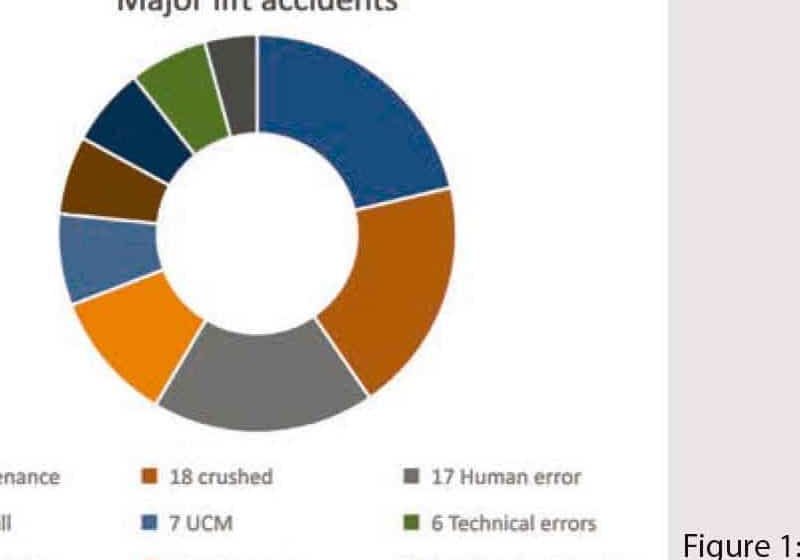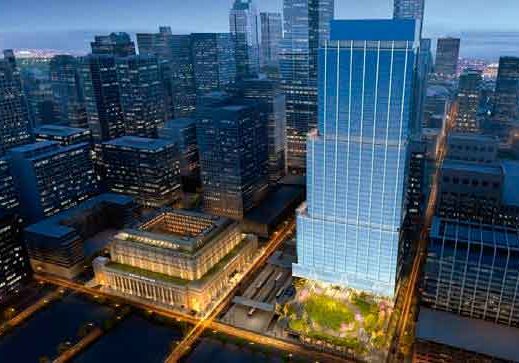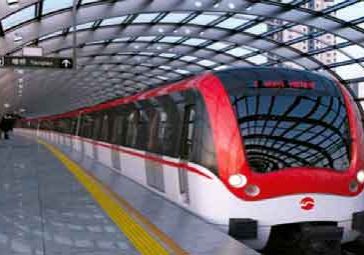Amos Rex: Futuristically Embracing the Past
Nov 1, 2018

New, carefully applied technology blends with the 1930s aesthetics of a Helsinki heritage building
A one-of-a-kind building opened in the heart of Helsinki in 1936. Dubbed “Lasipalatsi,” Finnish for “glass palace,” the clean, minimalist structure in the Streamline Moderne style has hosted restaurants, exhibition halls and offices.[1] It has included the 550-seat Bio Rex, a theater known for showing art films, and an events complex, since its inception.[2]
Refurbishment on the landmark to make it relevant for the 21st century yet preserve its historic charm began in January 2016. It was built as a temporary structure for visitors to what were meant to be the Helsinki Olympics of 1940. Due to World War II, however, the Olympics were not held in Helsinki until a decade later. Instead of being demolished as originally intended, it has served various functions and, along with the renovation, was expanded to house the Amos Rex art museum. The Bio Rex movie theater housed in the building has also been renovated and is back in use. It reopened on August 30, 2018, as the Amos Rex. Its name comes from Amos Anderson (1878-1961), owner of the Swedish- language Hufvudstadsbladet newspaper, patron of the arts and Finnish Member of Parliament.[3]
After its thorough restoration and vast underground expansion, Amos Rex now has a new, subterranean space built under Lasipalatsi to house the museum. KONE was asked to create and supply two elevators to fit the vision of chief architect (and Helsinki native) Asmo Jaaksi of JKMM. The challenge was to make 21st-century technology blend with the 1930s aesthetics of this heritage building.[1] It chose two KONE MonoSpace® 700 (trough type) units with a 1-mps speed and capacity of 1275 kg or 15 people. They each use an MX14 motor and a custom red/ green/blue LED matrix.
The restoration brought back the original colors, designs and materials of the interior that had been lost in previous renovations over the years. Timo Tiainen, concepts and design director for KONE, explained:
“It is a unique building. The architecture is a combination of old and new construction. The elevators are part of the architecture and the visual image of the building, so they are designed to fit into that environment.”[1]
Amos Rex has always been what might be called a functional work of art. Even its “flowing roof structures are sculptures,” noted Jaaksi. “The ceiling of the main lobby is part of the architecture, but it is also a work of art made of light.”[1]
Adaptable Light and Sound
Amos Rex also extends to the square outside it, a former bus station that is now a thriving city space that attracts both residents and visitors. As the complex is also an art house, and digital exhibition and event center, it needed elevators designed to complement and serve the multiple uses that change with each exhibition and event. Thus, said Tiainen, “the elevators themselves are adaptable. The walls of the elevators display programmable lights and animations, which are also integrated with speakers to add an auditory element.”[1]
The new technology in the elevators is called a “MediaWall,” which is controlled by Dmx/Artnet to allow the themes and mood of the experience they give to be changed at will. Tiainen added:
“Many different people come to Amos Rex. People come to eat at the restaurants, to see a movie, to go to a company meeting or to attend an art exhibition. The elevators need to be versatile and accessible for everyone. First, we start with the foundation of safety, comfort and utility. Then, we think about how we can contribute to the experience and bring joy to people.”[1]
Jaaksi calls the journey in the elevator of any building “a very important moment.” He considers the elevator not only part of the architecture, but also an element that provides an experience, elaborating: “The original building was futuristic and forward- looking when it was built, and we wanted this new extension to have the same feeling. This elevator is an integral part of that.”[1]
As for the sensational color in the photos here, KONE put a lot of thought into color, as it carefully considered the lighting and shading that affected it. “Color plays a big role in our lives due to evolution,” Harald Arnkil, lecturer in Color Studies at Finland’s Aalto University, explained:
“The classic theory is that early primates developed trichromatic color vision to better distinguish ripe fruit and other sources of nutrition in the primordial forest. In this way, color is fundamental to survival. Additionally, color guides the sexual behavior of many animals, including humans. Color is a signal associated with our enjoyment, taste and pleasure. It definitely affects our mood and behavior.”[4]
While colors influence our mood, the way we experience them is also important. For example, while we might like red, a red apple impacts us very differently than a red sky. Arnkil explained that while “surface color, like pigment or paint, gives us information,” it “can create mood or atmosphere symbolically, through association. But colored light has the potential for a more direct impact on our emotions, penetrating, as it were, straight through to the most primitive parts of our brain.”[4]
In using colored lighting to create the atmosphere in the elevators, KONE made them part of the exhibition: two of their walls are covered, floor to ceiling, with integrated LED-matrix lights diffused by several layers. They are covered by a glass face, making individual pixels invisible. Colored light seems to flow up, down and around the walls, pulsing, shimmering, waving and even rippling out from the round car-operating panels like from a stone tossed into water. The lights are programmable and given such specified tasks as welcoming, relaxing and exciting visitors. “Or, they could actually be part of the exhibition,” Jukka Korpihete, senior lighting design specialist for KONE, added. “The walls could be linked to the light animations created by artists for the museum exhibitions. Acoustics are also important. We can modify the sounds people hear to make the elevator ride part of the museum experience.”[4]
Korpihete also said integrating the technology into the wall materials and developing the controller proved a major undertaking. However, he added that even though the system is unique, KONE could use the same solutions for other applications. He gave examples of the walls hypothetically displaying announcements and changing colors to match the season, times of day and special events/promotions.[4]
Looking at the project design from the perspective of designing the journey, not the product, KONE learned many valuable lessons when creating these exclusive elevators, Tiainen concluded. “I hope people will later say, ‘Oh, yes. I remember riding in that elevator!’”[1]
Acknowledgements
Your author thanks freelance writer David Cord for his informative articles on the project and Laura Vinha of KONE for her aid in obtaining information on and photos of the elevators.
References
[1] David Cord. “Making the Elevator Journey and Artistic Experience” (www. kone.com/en/news-and-insights/stories/making-the-elevator-journey- an-artistic-experience.aspx).
[2] Cinema Treasures. “Bio Rex” (http://cinematreasures.org/theaters/13327).
[3] Wikipedia. “Amos Rex” (en.wikipedia.org/wiki/Amos_Rex).
[4] David Cord. “Color Matters” (www.kone.com/en/news-and-insights/ stories/color-matters.aspx).
[5] AFAR. “Inside Helsinki’s New Underground Art Museum” (www.afar.com/ magazine/inside-helsinkis-new-underground-art-museum).
Get more of Elevator World. Sign up for our free e-newsletter.








